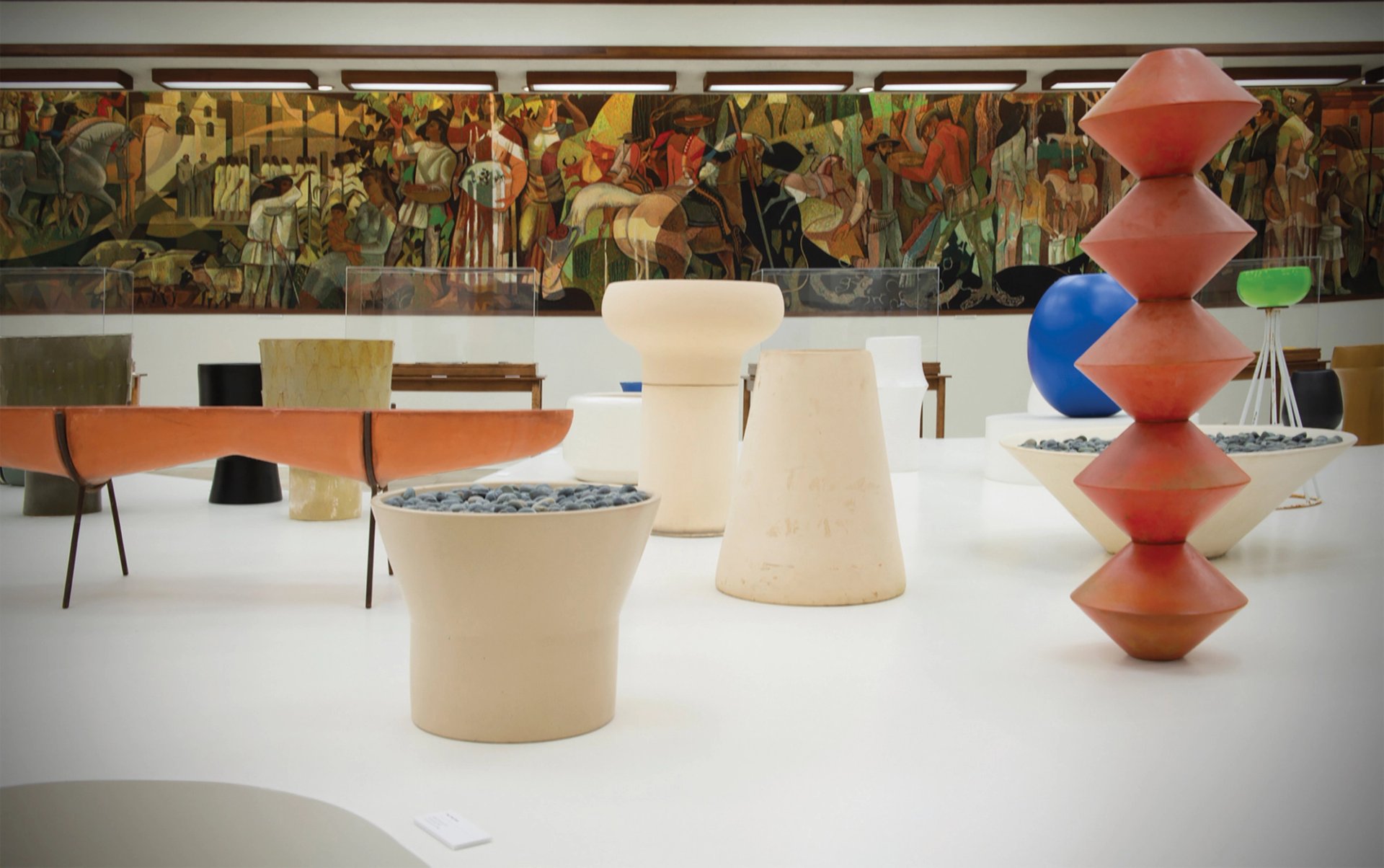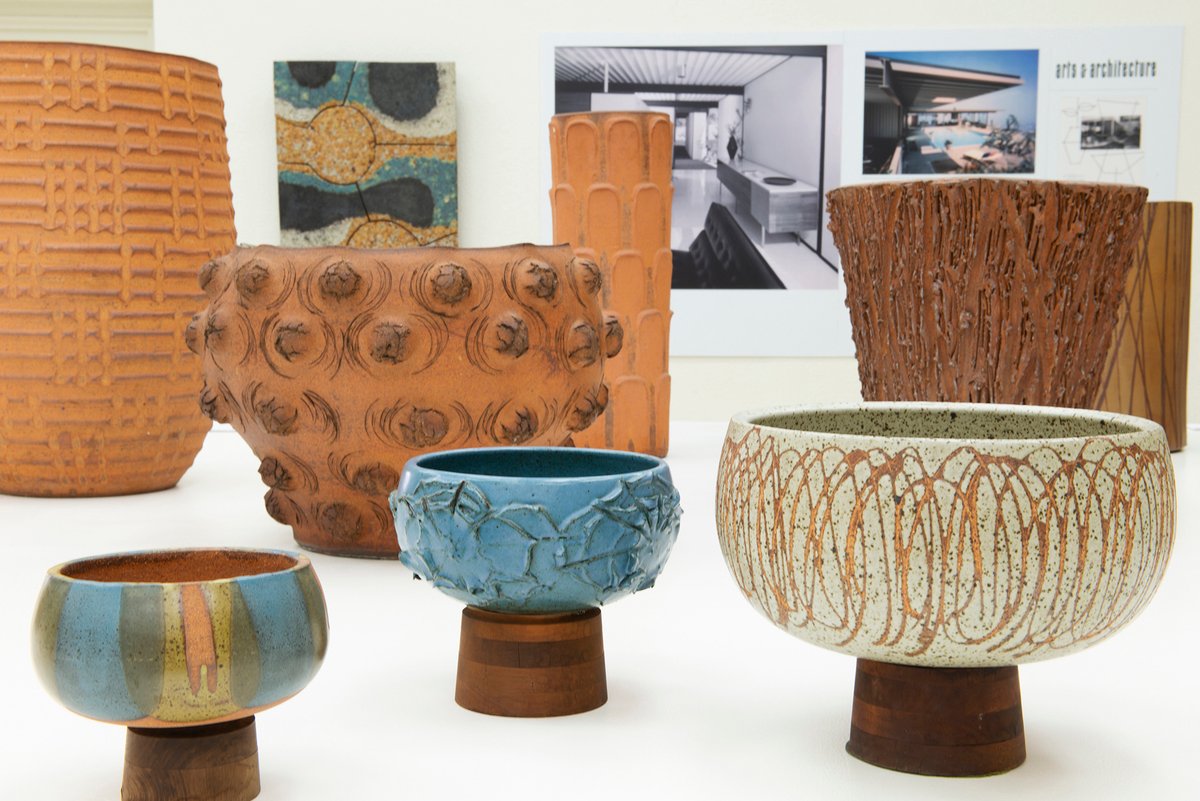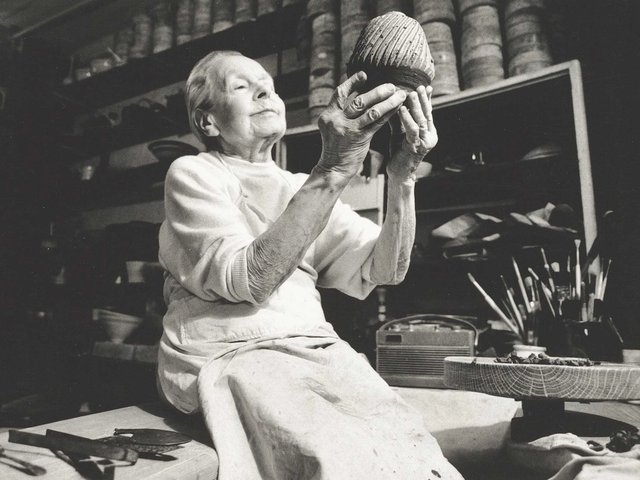One of Los Angeles’s defining mid-century design companies began at the kitchen table of a young couple living in a new housing tract in Mar Vista. In 1950 Max and Rita Lawrence, enamoured with post-war aesthetics, launched Architectural Pottery, producing ceramics to suit the new Modernist homes popping up all over Southern California. The couple lived in a stylish house designed by Gregory Ain, and Rita decried the prevailing taste for pseudo-historic home décor, saying: “All the pottery then were Italian, Spanish or Renaissance. There was nothing at all that suited the new city architecture.”
The Lawrences started Architectural Pottery with two young designers, John Follis and Rex Goode, who had learned to make and market contemporary ceramic products while in art school. In the next two decades, the company moved from the Lawrences’ house to offices and a showroom on South Robertson Boulevard and several warehouses and factories. Their vessels were featured in one of the Good Design exhibitions at New York’s Museum of Modern Art in the early 1950s, alongside designs by Charles Eames and Russel Wright. Architectural Pottery’s pots and sculptures were sometimes biomorphic and sometimes geometric, often in white, black and earthtones with the occasional blue or orange popping up. Soon they became widely emulated; they still are today.

The American Museum of Ceramic Art exhibition includes large-scale Architectural Pottery works, as well as contemporaneous photographs of pieces in Modernist homes Photo: Dan Chavkin
Architectural Pottery: Ceramics for a Modern Landscape at Pomona’s American Museum of Ceramic Art tells this remarkable story through photographs, ephemera and examples in showcases and on curved display platforms in the middle of a large gallery. The show is an offshoot of the eponymous book published by Monacelli Press, a project started by Dan Chavkin, who has photographed many mid-century homes in Southern California.
Design beyond pottery
The exhibition is curated by one of the book’s co-authors, Jo Lauria, and it starts with a history of the company. (Jeffrey Head is the third co-author.) There are photographs of the Lawrences and early collaborators, followed by a gallery of key designers with examples of their work. Rita, in order to get a fresh take on their products, worked with young potters as well as designers outside the field of ceramics. The first full-time designer the company hired was a woman—Marilyn Kay Austin, who had a degree in industrial design from the University of Illinois. Austin created one of Architectural Pottery’s most popular products, the ovoid “egg” that stands on its end.
All the pottery were Italian, Spanish or Renaissance. There was nothing at all that suited the new city architectureRita Lawrence, ceramicist
But perhaps the company’s most important employee, according to Lauria, was David Cressey, who studied ceramics with Vivika Heino at University of Southern California and with Laura Andreson at the University of California, Los Angeles. Starting in 1961, Cressey oversaw Architectural Pottery’s production and introduced several new designs. “He had this library of moulds, and then he would establish a vocabulary of textures and glazes,” Lauria says. “There were 14 textures and about 11 glazes that you could choose from, and you could customise your pot.” The result was a nearly endless variation of looks.
Rita may have been the president of the company, focused on sales and marketing, but she also saw her role as creative and inspirational. “That period and its excitement was very much a part of our everyday conversation at the dinner table,” recalls Damon Lawrence, Rita and Max’s son and a company employee in the 1960s. His parents were close friends with designers and architects, “who were all trying to create a new model and a new type of living”, he adds. In their utopian thinking, good design could lead to a better life.
In 1974 the Lawrences sold their interest in Architectural Pottery, which became known as Group Artec. Ten years later, the company closed after a fire at one of its manufacturing facilities. Today, vintage Architectural Pottery pieces go for thousands of dollars on sites like 1stDibs and Etsy, with licensed versions still made by Vessel USA.
• Architectural Pottery: Ceramics for a Modern Landscape, American Museum of Ceramic Art, Pomona, until 2 March



